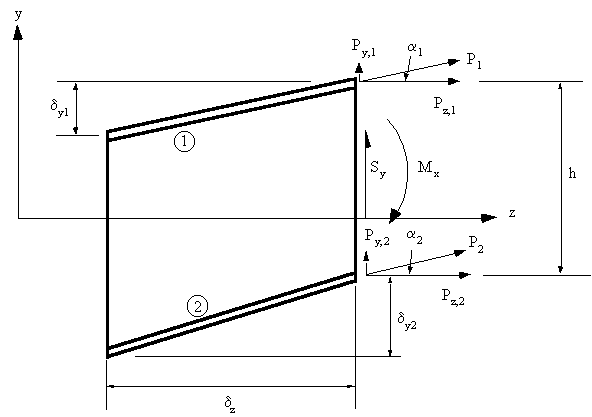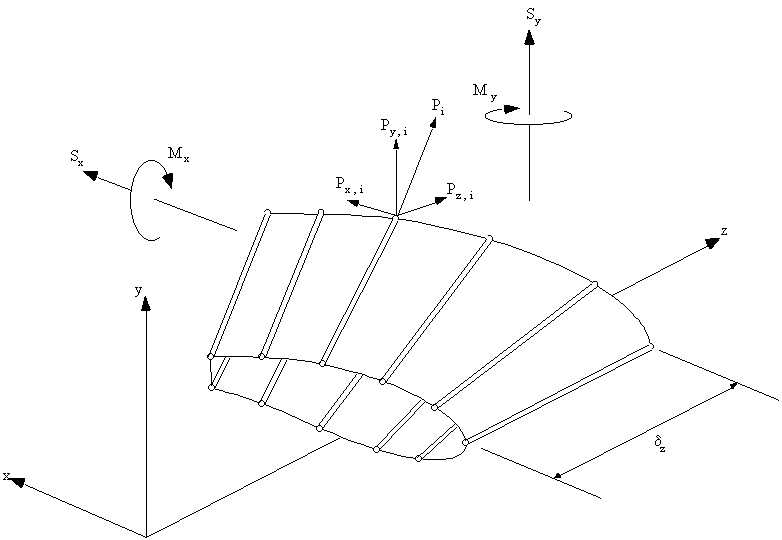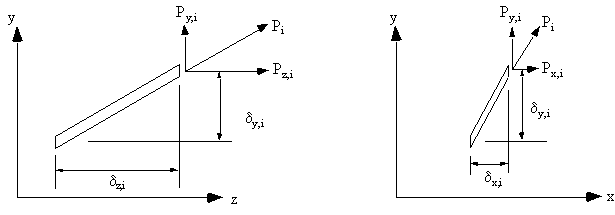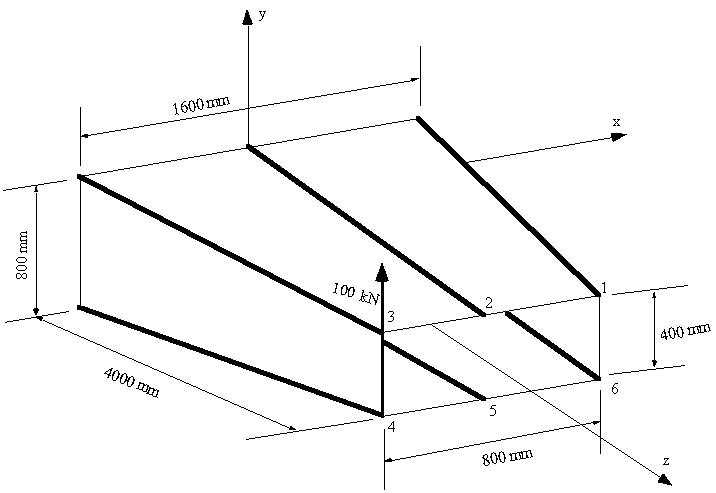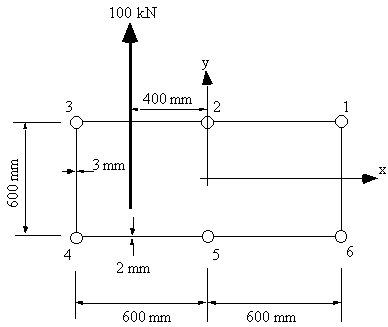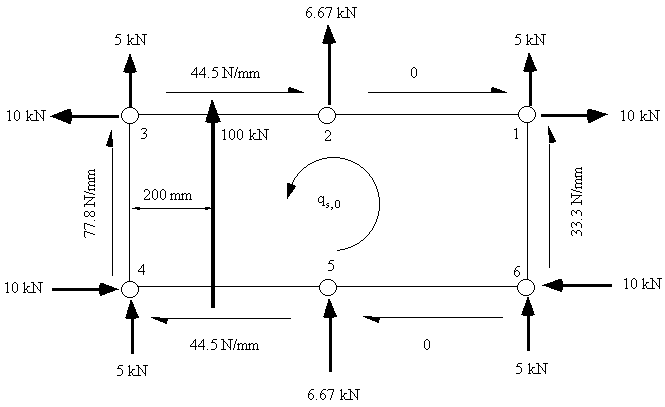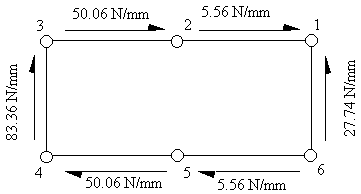PART EIGHT
TAPERED BEAMS
Most aircraft structural components are tapered to improve structural efficiency. All the analysisdone so far assumes the beams have uniform cross sections. The effect of taper on direct stresses produces by bending moments are minimal if taper is small
and the sectional properties are determined at the section analysed. However the effect of taper on shear stresses is considerable.
SINGLE WEB BEAM
Consider an idealised section of beam of length dz in the x-y plane with 2 flanges and a web.At the RHS, it is subjected to a positive Moment Mx and Shear force Sy. The horizontal resultant
forces carried by the booms due to the bending moment Mx are: Pz,1 and Pz,2, and are defined by
the equation:

|
Figure 96: Effect of taper on single web beam analysis |


forces carried by the booms, Py,1 and Py,2. Thus:

equation (8.1) into (8.4) gives:


OPEN AND CLOSED BEAM SECTIONS
The effect of taper on open and closed beam section is exactly the same, and is defined by theanalysis which follows. Consider an idealised beam of length dz carrying positive shear loads Sy and Sx at the section z.
The beam is also subjected to bending moments Mx and My which produce a direct stress sz in
the booms. Note : The skin is only effective in shear. The FBD for this boom is:
|
Figure 97: Effect of taper on the analysis of open or closed beam section |
stress in the z direction is:

|
Figure 98: Effect of taper on ith beam of wing section |




divided by the boom's true cross sectional area. The shear loads Sy and Sx are reacted by the boom loads Px,i and Py,i and the shear flows in the
skin and web panels, such that:


that instead of using Sy and Sx as the shear force terms you now use Sx,w and Sy,w. Which is the
fraction of the applied shear force carried by all skin and web panels. Warning: When taking moments to determine shear centre or qs,0 you must also consider
the moments generated by all the Px,i and Py,i which are the fractions of the
applied shear forces carried by the booms, equation (8.12).

y axis and carries a load of 100 kN at its free end. What are the boom forces
and the shear flow distribution in the walls at a section 2 m from the built in end.
The boom areas are B1 = B3 = B4 = B6 = 900 mm2, B2 = B5 = 1200 mm2.
|
Figure 99: Tapered box beam |
|
Figure 100: View of section 2 m from end |
![]()
![]()
![]()

(8.10) we get that: Syw = 100 - 33.33 = 66.67 kN, and Sxw = 0 - 0 = 0 kN c) Determine Open Beam Shear Flow by cutting between booms 1 and 2 Because of symmetry, equation (6.12) simplifies to
![]()
![]()
boom 2 gives:
![]()
![]()
![]()
![]()
![]()
|
Figure 102: Diagram of open beam shear flows, shear forces carried by booms because of taper and qs,0 |
34. 100x103 x 200 = 10000x300 - 44.447x600x300 + 6666.7x600 + 5000x1200 - 10000x300
+ 33.335x600x1200 - 10000x300 + 5000x1200 + 6666.7x600 -
44.447x600x300 + 10000x300 + 2x1200x600xqs,0 giving that qs,0 = - 5.56 N/mm, and so, the shear flow distribution is
|
Figure 103: Final shear flow distribution in tapered beam at 2 m from fixed end |
